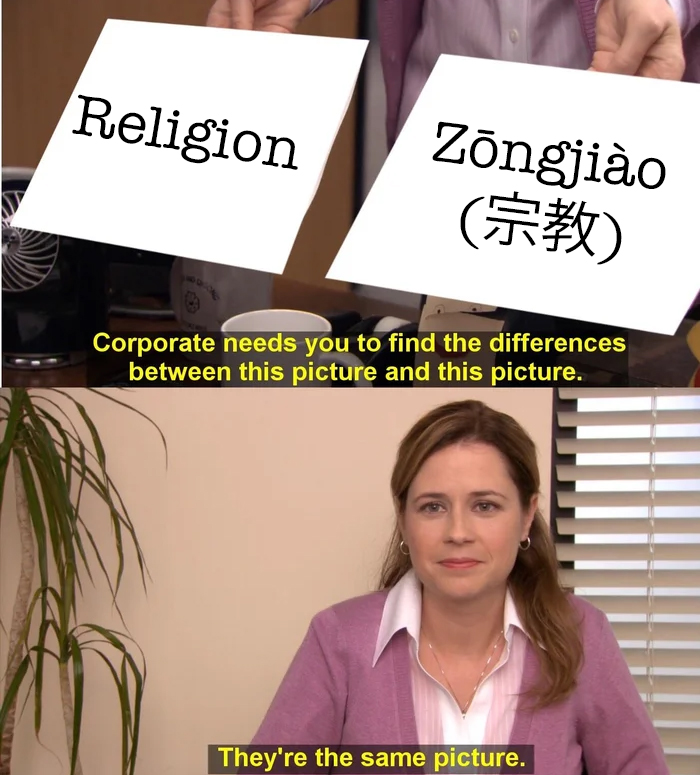
Jeremee Nute is a graduating M.A. student in the Department of Religious Studies at the University of Alabama. He is originally from Missouri, where he earned his B.A. in Mathematics and Philosophy from Missouri Western State University.
Scholars who research cultures outside of Europe and North America often try to find categories that correspond to “religion,” such as those who study Ancient China. For example, one analog that is sometimes proposed by these scholars is Zōngjiào (宗教), said to be the Mandarin term for religion. One such scholar who looks for such homologs to religion is Robert Ford Campany, a Professor of Asian studies at Vanderbilt University, who specializes in Medieval China. In his article, “On the Very Idea of Religions (In the Modern West and in Early Medieval China)”, he argues that, while the western category of religion can be analytically helpful to those studying non-western cultures, scholars just need to “pay close attention to two cultural and temporal sets off linguistic usages and their metaphorical implications and juxtapose these results” (290). This juxtaposition, he argues, allows a scholar to better understand the “contours and limitations” of the discourses in both cultural and temporal sets.
Thus, for Campany, scholars can study other people’s religions (such as his work on early medieval China) by looking for the following analogous sites in their cultures: founder or paragon synecdoche, “path” or “way,” “law” or “regulations,” and/or “the teaching of x,” etc.
But in order to find these equivalent categories in Early Medieval China, you would already have to have a working understanding of “what religion is.” For it is this understanding that acts as a search image that allows you to hone in on the “correct” set of homologs. If Campany did not have this search image, he would have no way of picking out which aspect of Chinese culture to compare with “religion.” What’s more, it seems that this reference point is informed by a Christian-based category that’s long been central both to European self-understanding and a long history of governing others worldwide–something that goes unaddressed when looking for its match in Medieval China. Also, Campany does not seem to see that his argument only works if you conceive of religion as something that is “out there” and that can be found everywhere (though with different names, of course). This can be seen in his claim that “taxonomic map is not religious territory”; this is a twist on J. Z. Smith’s well-known phrase in Map is Not Territory. However, unlike Smith — who argues at the close of that essay, that, whether or not there is a territory, all we have are maps — Campany, seems to be arguing that the apparent reality named as religion corresponds to the territory and that it’s mapping, or its naming shall we say, has been dominated by a western, particularly Christian, understanding; all that a scholar needs to do is to find the “correct” map to accurately understand, and name, religion in China. Thus, whether intended or not, he seems to preserve the idea that whatever it is that religion names it is pre-cultural and ahistorical — in a word, sui generis.
Now, I do not disagree with Campany when he recommends that we should look for analogs in China, or anywhere else that we may do our work; but, instead of looking for religion from society to society, my suggestion is that scholars should start looking for ways that societies govern the various sub-groups that comprise them. For it seems to me that every society has a way to categorize its various inhabitants, such as ways to indicate what behaviors and which groups of people are allowed or disallowed, privileged or regulated, etc. — the strategy of exercising (and then authorizing) a choice. Or, as J. Z. Smith calls it, an exercise in the economy of signification. For calling something (and then treating it as) religious is but one with which we, in a European-influenced tradition, are familiar. While that one technique is likely not itself universal, what it aims to accomplish–the classification and ranking of members–might be; and that’s what we should be looking for.
So, maybe instead of looking for and comparing such things as founder discourses, scholars should study how, at least in the case of contemporary China, the Chinese Communists Party deploys the categories, like Zōngjiào (宗教) and Míxìn (迷信), to known and control different groups of people.